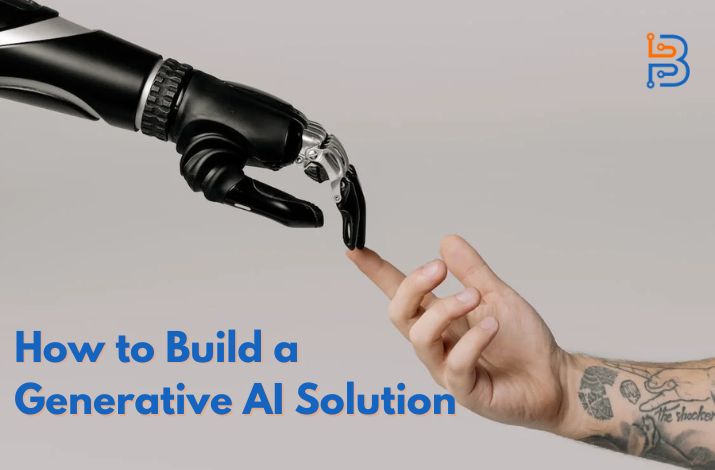Predicting the Unpredictable: The Power of AI in Horse Racing Analytics

Horse racing is a sport that heavily relies on data. From training racehorses before an event to tracing their health, and placing a bet.
It is one of few sports where many different variables are in play when making any decision. So, since we have a sport that is strongly connected to data, what if we infuse it with machine learning and AI?
It seems like horse racing and AI are a match made in heaven. The idea of using AI in horse racing actually makes perfect sense. In order to make any prediction in this sport, you’ll need a vast amount of data, and even then, the outcome cannot be predicted with 100% accuracy.
But don’t get discouraged. After all, the uncertainty in horse racing is what makes the sport exciting. Why would you check the Breeders’ Cup results by TwinSpires.com if you already know who won the race?
Processing large amounts of data is impossible for humans, which is where AI comes in. This technology has the ability to process piles of data in minutes and see patterns that might occur after specific actions.
This inspired us to take a look at the power of AI in horse racing analytics and find out how this new technology can be used in predicting races.
What Role Does Data Analysis Play in Horse Racing?
Horse racing profoundly depends on data analysis, focusing mainly on the victory patterns of horses and riders, dissected into numerous elements that influence a horse’s race performance. This crucial data is meticulously examined by those forecasting race outcomes, jockeys, sponsors, and various entities in the sport to secure a competitive advantage.
Riders play a pivotal role in applying race data insights to enhance their training regimes. Besides heart rate monitors, elements like specialized reins, bits, and saddles are utilized to augment a horse’s performance and overall comfort during the race.
Through the diligent tracking and scrutiny of biometric data amassed during races, the team’s veterinarians are enabled to detect potential health risks promptly, ensuring immediate action and averting the escalation of more critical health complications.
Predictive Analysis
A crucial implementation of AI in horse racing revolves around predictive intelligence. AI algorithms assist trainers and owners in forecasting a horse’s performance with enhanced precision. For example, by evaluating a horse’s speed, AI can foresee the likely pace of the horse in a specific race.
Moreover, AI algorithms incorporate various elements like the horse’s health, jockey’s efficacy, and prevailing weather conditions in forecasting winning probabilities. Such considerations empower trainers and owners to make informed decisions regarding which horses to participate in races and their effective training strategies.

Augmented Reality Overlays
We know that AI can process vast amounts of data, but that data can be used for much more than just predictive analysis. The goal is not to make the sport easier to predict but to make it more interesting and fun.
Technologies such as AR (Augmented Reality) are already changing the spectator aspect of the sport. AR with the power of AI can be a huge game-changer for the horse racing industry. Imagine watching the Breeders’ Cup in person, and being able to see real-time data such as speed, stamina, heart rate, and more through your phone.
It is quite interesting technology that will make horse racing even more fun to watch, and even help bettors make more informed predictions, and help trainers notice unusual data that might lead to a horse getting an injury.
AR has already been used in certain races, but we are still far from making this technology mainstream.
Enhanced Betting Odds
Data analytics plays a pivotal role in refining the betting odds for racing enthusiasts. By leveraging historical data from past races and scrutinizing variables such as meteorological conditions, track dimensions, and jockey effectiveness, bookmakers are empowered to formulate more precise forecasts regarding the outcomes of imminent races. Consequently, bettors can wager with enhanced assurance, basing their decisions on robust data instead of mere intuition or speculative impulses.
Elevated Spectator Engagement
Moreover, data analysis is instrumental in fostering a more captivating spectator involvement during live races. Through the incorporation of sensors in saddles and various equipment, spectators are granted access to instantaneous data reflecting each horse’s speed and performance metrics throughout the race.
This innovation unveils a remarkable depth of insight into the components contributing to race victory, a perspective historically unattainable without the accessibility to such sophisticated metrics.
How is Data Revolutionizing Horse Racing?
Data acquisition, facilitated by diverse technologies, is emerging as the transformative force in horse racing, granting teams, healthcare professionals, and aficionados unprecedented access to essential information that was once inaccessible.
In numerous horse racing events, betting firms harvest over 10,000 data attributes per horse each second, equipping them to craft more precise forecasts concerning the race outcomes. Concurrently, teams can employ GPS insights to tailor training schedules, concentrating on distinct segments of each course, fine-tune a horse’s nutritional regimen, and preempt injuries.
Is AI Proficient in Accurately Forecasting Horse Races?
Even though AI is becoming more powerful, horse racing is a type of sport where it is impossible to get a 100% prediction. After all, it is a sport impacted by various factors such as weather conditions, recent form, horses’ and jockey’s mood, and injuries which most of them are out of control for the racehorse owners and jockey.
Therefore, AI cannot predict the outcome of a race every time. However, it can definitely use the data collected to narrow down your selection of horses and give you the top picks that have the biggest potential to win.






